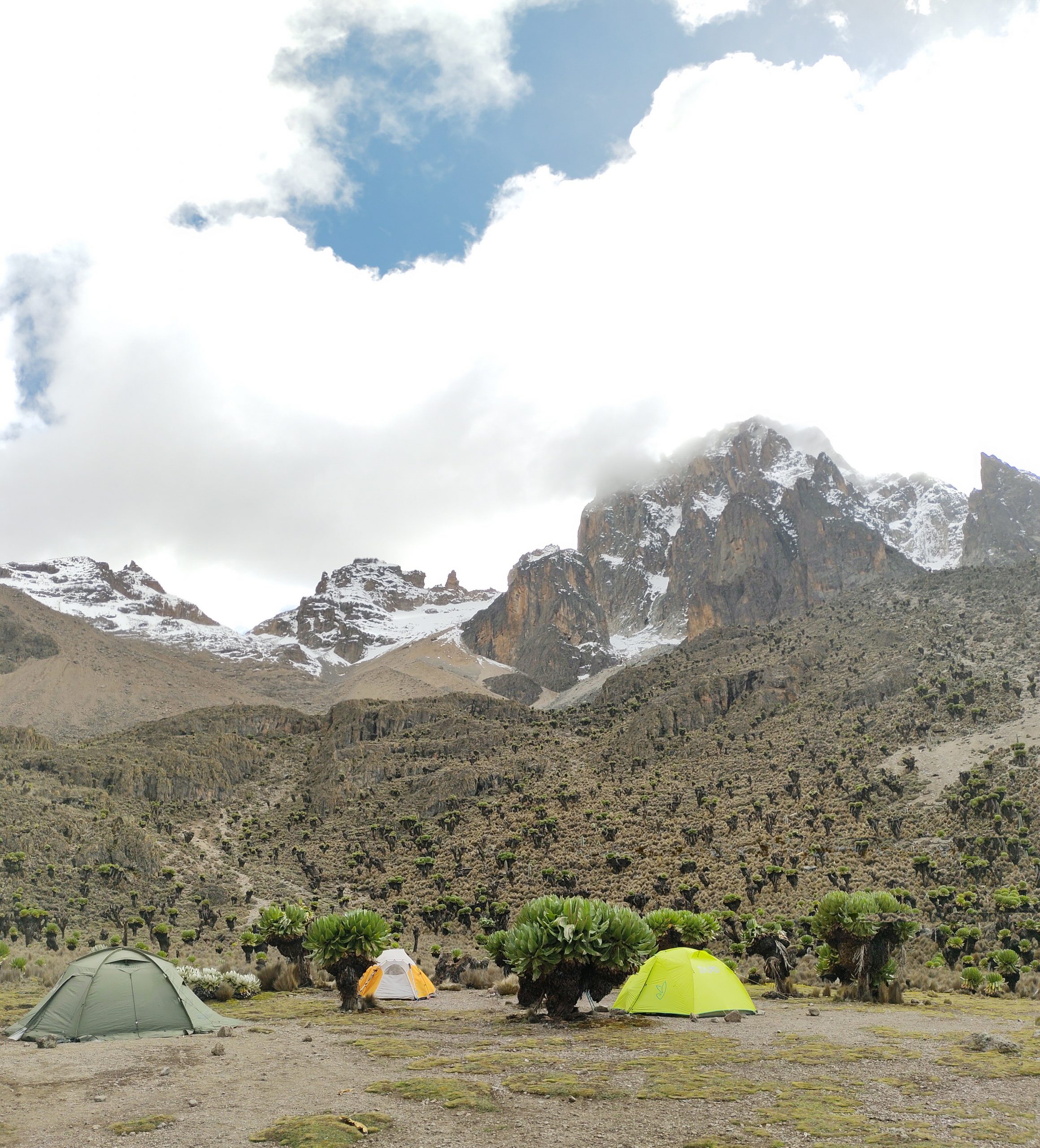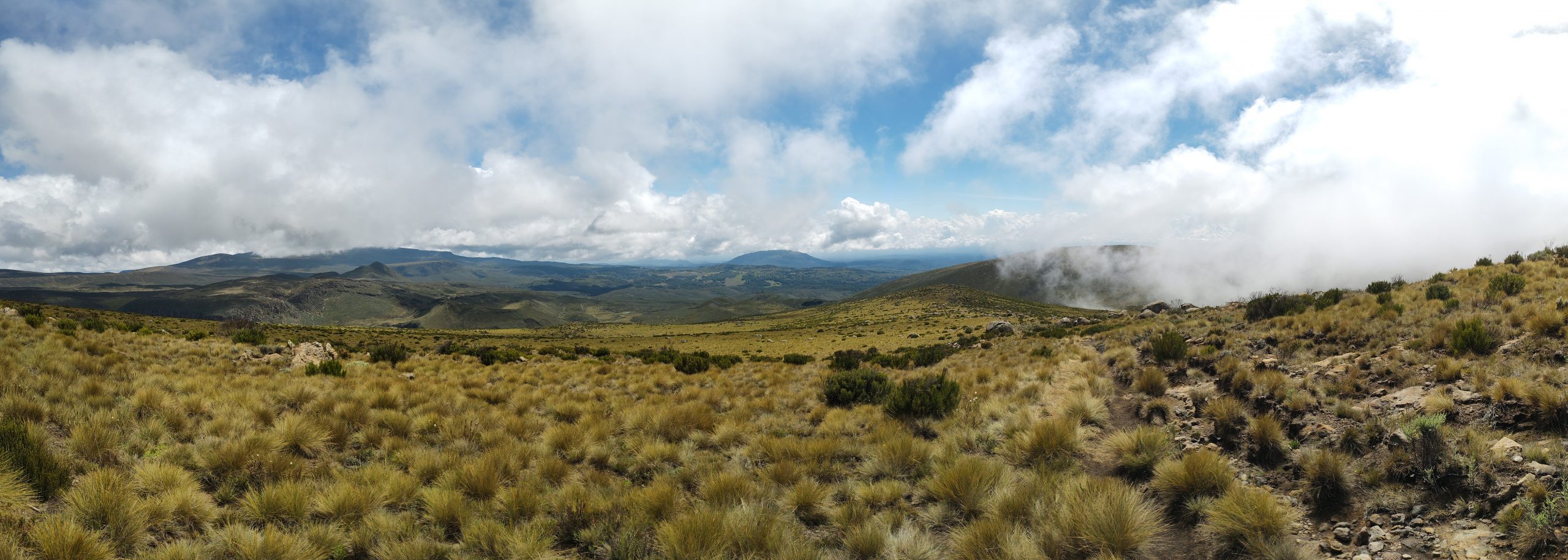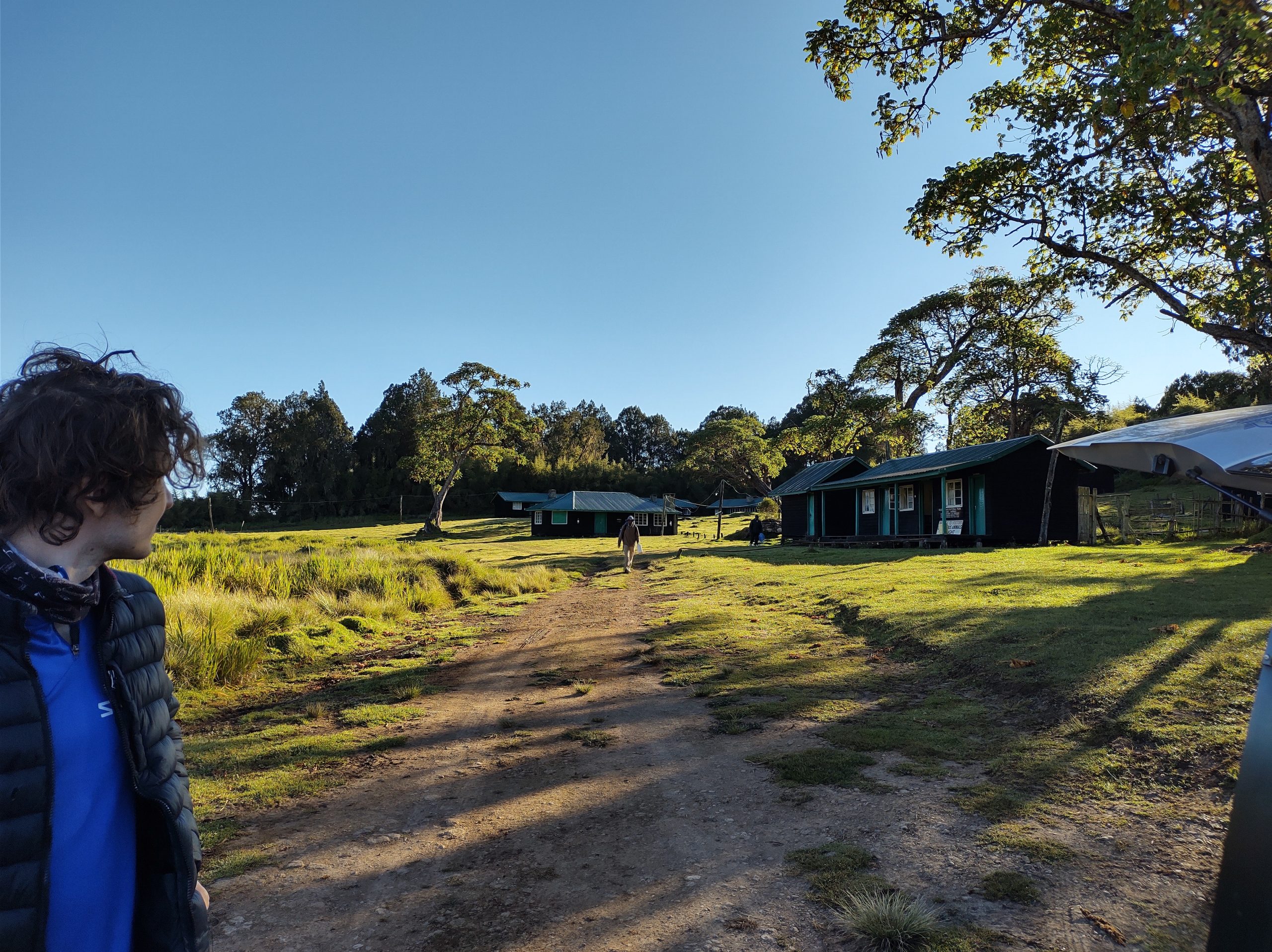Saturday morning we got up to hike mount Vuria the highest peak in the Taita Hills at 2,228 meters. At first we were all worried this hike was supposed to be much harder than the previous one and at the start of the hike the sun was beating down on us. However in the end we found it much easier as the area got moister and colder as we were climbing and we took lots of breaks.
On the way up, Mwadime, one of the station members provided lots of information about the surrounding plants and culture. He taught us about how the local farms are split between all children after the parents’ death, meaning that the farmland an individual owns decreases after each generation. This has led to farmers buying and expanding their land into the lowlands. Addtionally we were taught about some of the human wildlife conflicts with the local monkeys trying to steal farm food, meaning the farmers have to stay up all night to protect their crop. During the trek we also learnt about the tree species in the area with 95% of the valley being exotic trees such as eucalyptus, avocado and cyprus trees. Whilst walking we found a wild ancient banana species, which Mwadime mentioned that in times of famine, these wild banana species could become an important source of food.
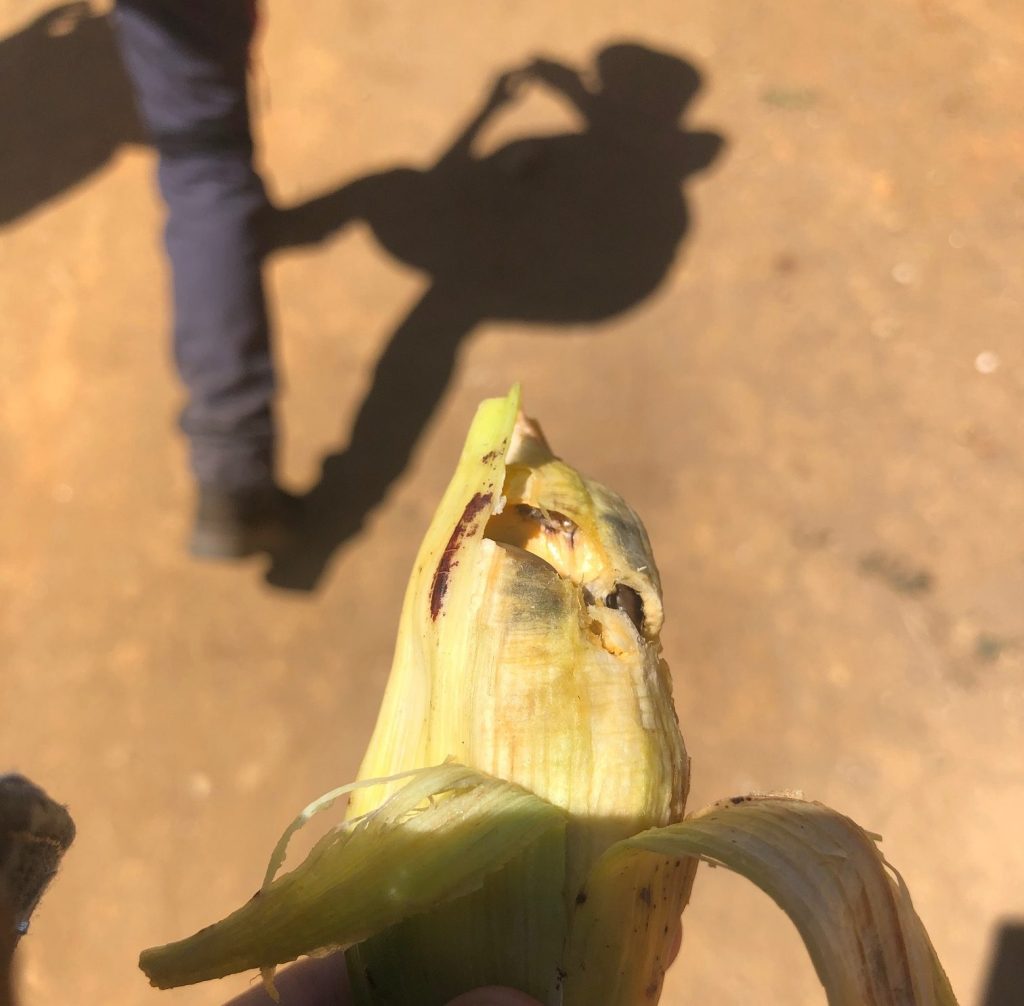
Further into our trek, we started to enter the forest where the climate became cooler and our our trek got easier for a while, apart from being yelled at by some disgruntled goats along the way. Later on, we came across a fern tree forest, which was something I previously wasn’t aware of even existed, but as we continued the forest provided a new issues, mainly that it seemed like every tree was trying to trip us up.
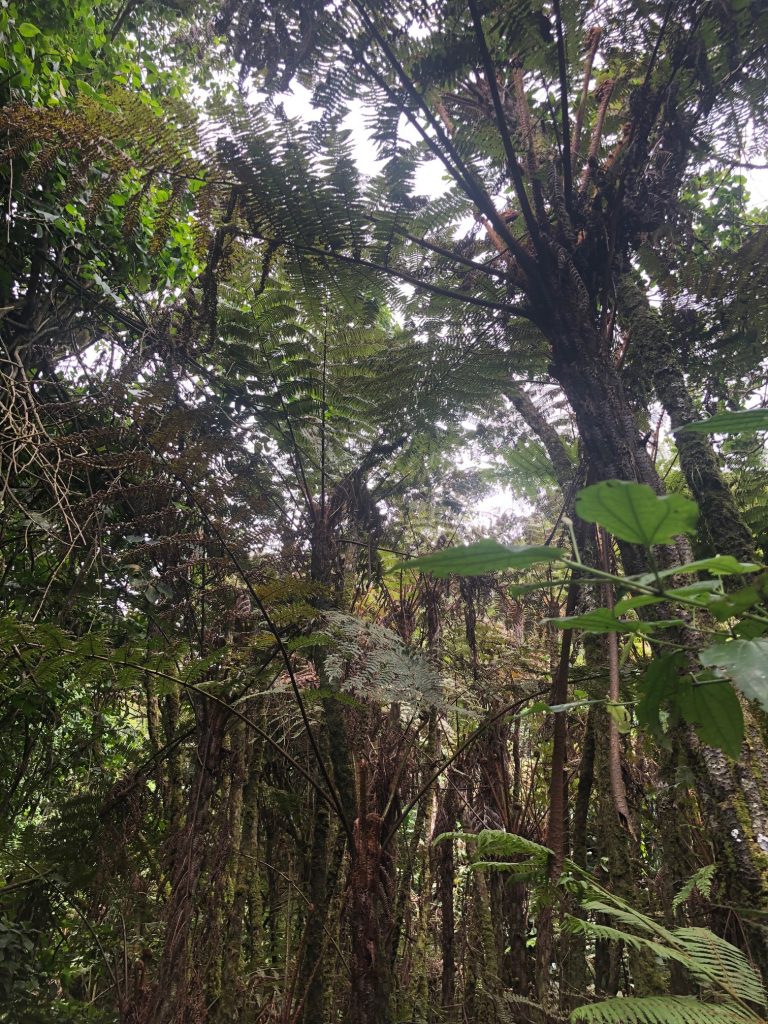
Finally, we made it to the top, where we had the most stunning view of the savanna below and had a lovely long lunch, where we could relax and enjoy the sun and the view. Unfortunately, some of us enjoyed the sun too much and got some nice sun burn whilst up there.
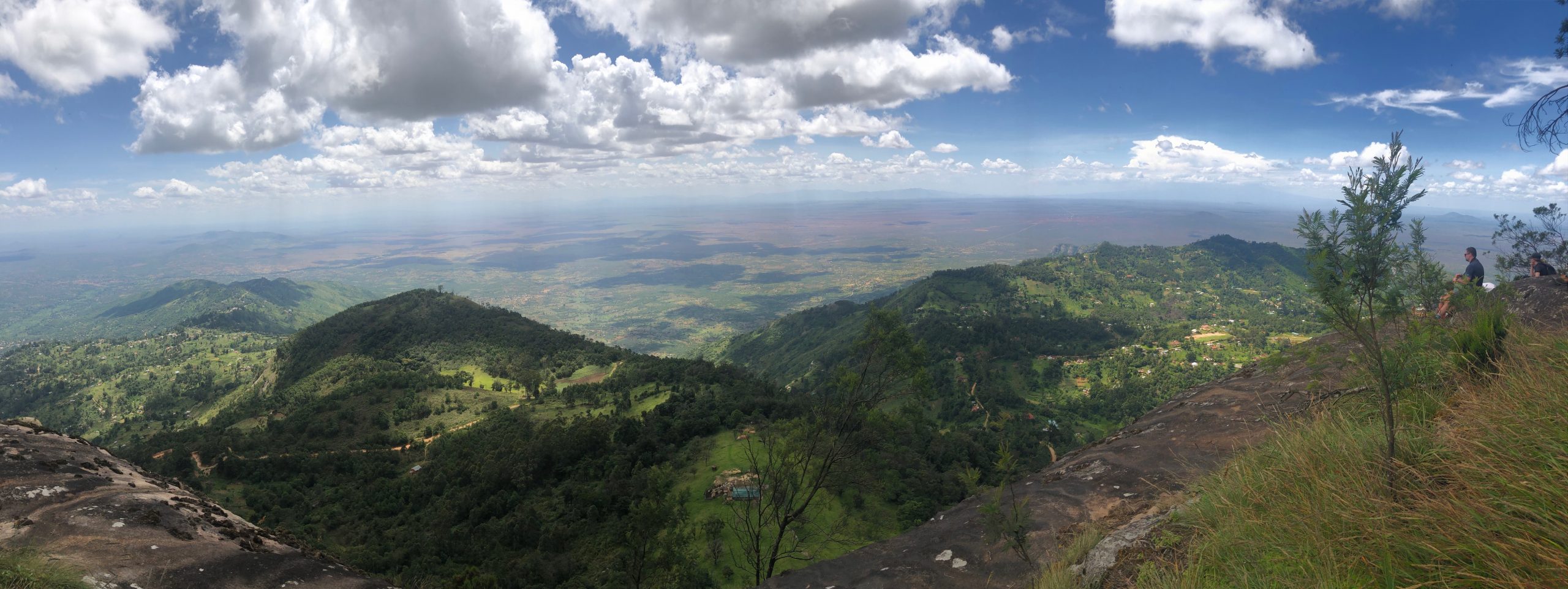
After we got back down the mountain, we rewarded ourselves for our hiking efforts by visiting a local pub for a nice beer. We then left to head towards our next destination for the day, a skull cave which is a sacred burial site to the local people. Here all the important members of the local clan have their skulls are laid to rest. These are laid out in a particular order based on generation so that clan members can later recognise their loved ones. Whislt there, Mwadime told us more about the caves and their importance, mentioning that it is very dangerous to remove any of the skulls. He then told us a story of a local school teacher who took one of the skulls for his science class, only for the school children to become uncontrollable until the skulls were given back to the elders and the appropriate rituals were preformed.
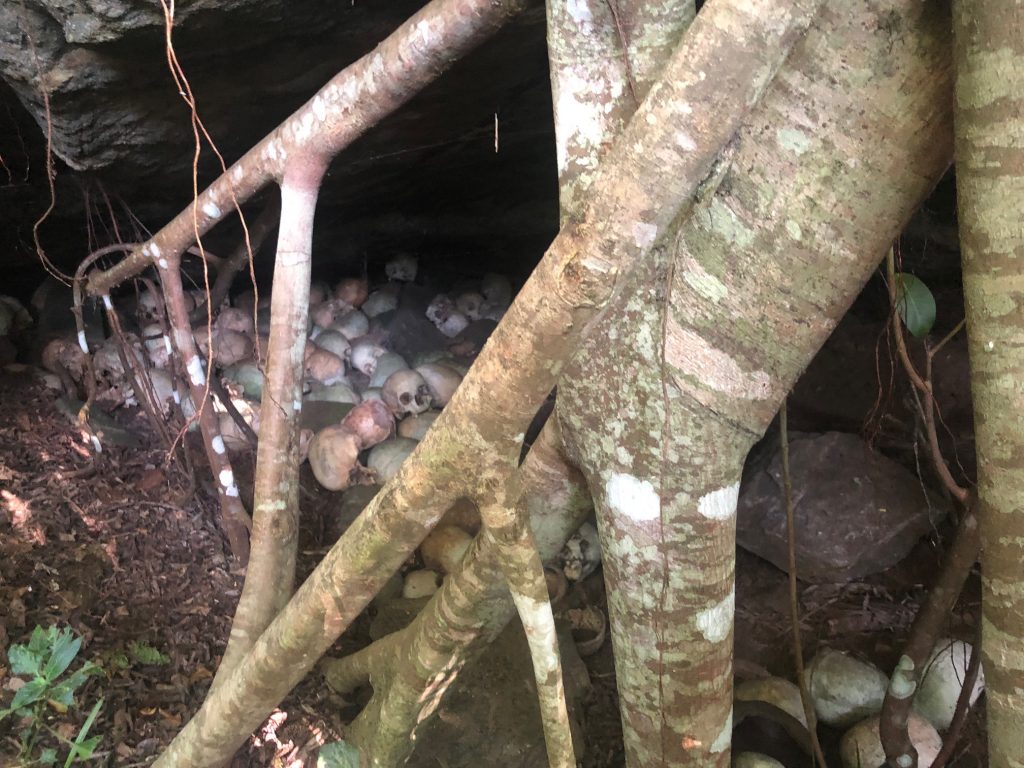
Overall we had a very interesting day filled with lots of different activities, with special thanks to Mwadime for being a wonderful guide for the day!
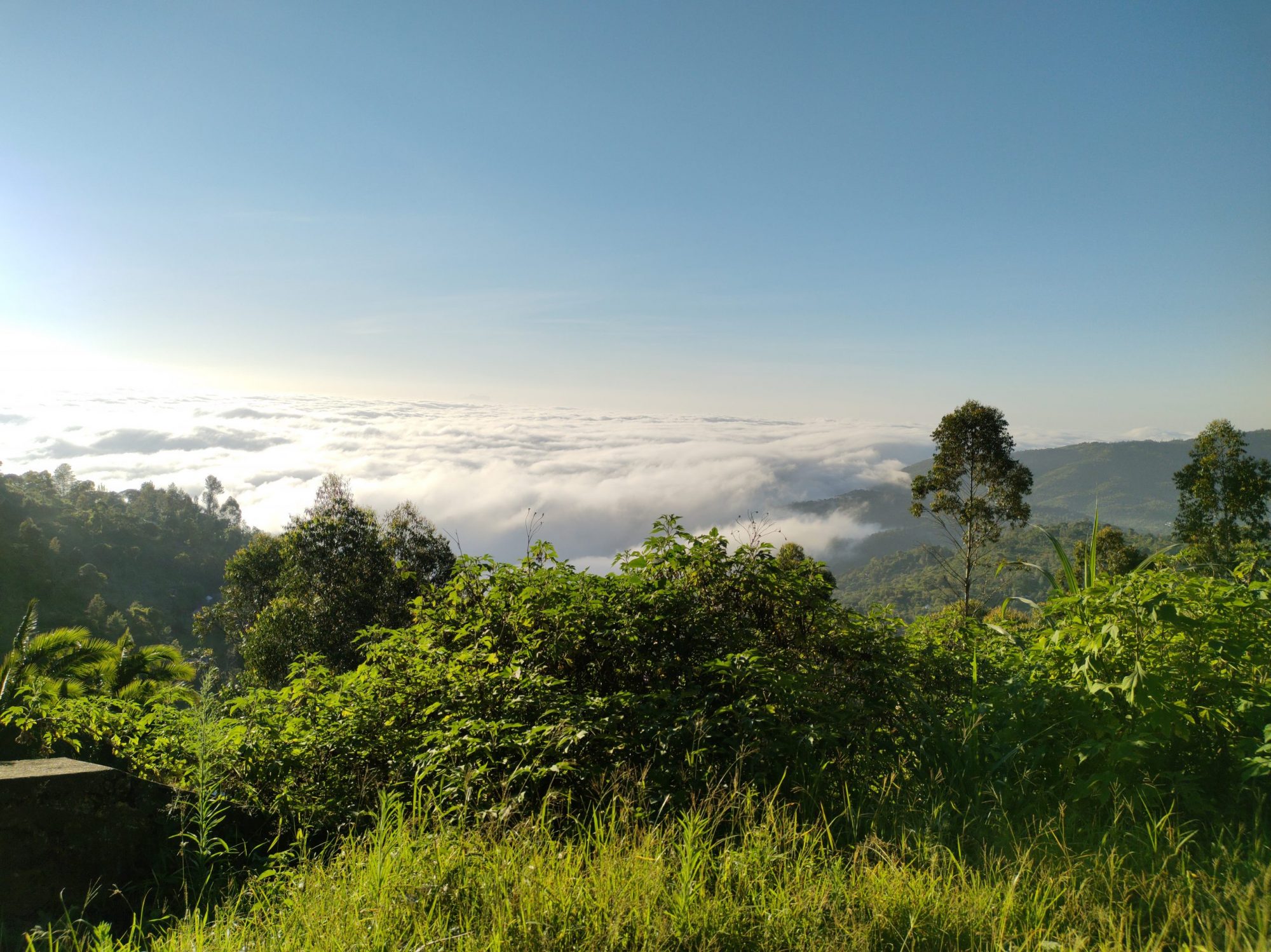
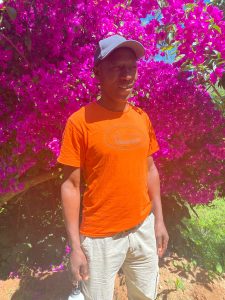
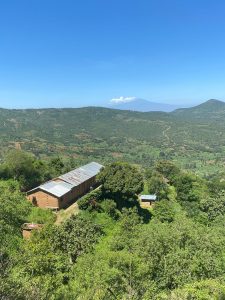
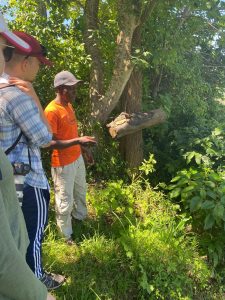
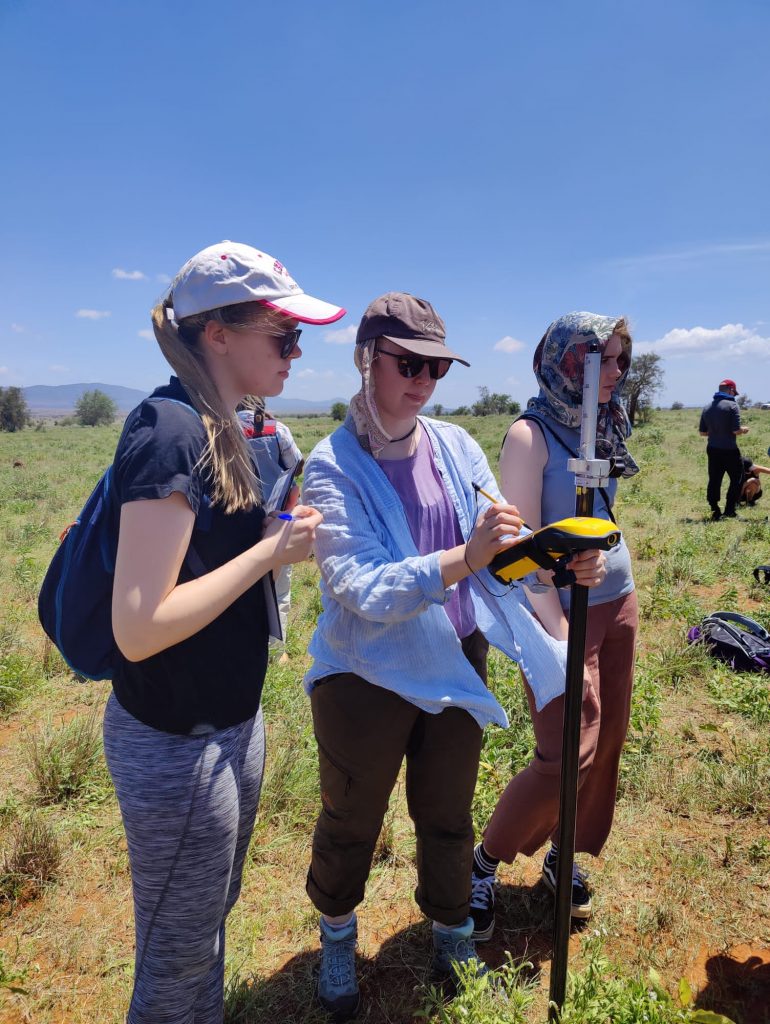
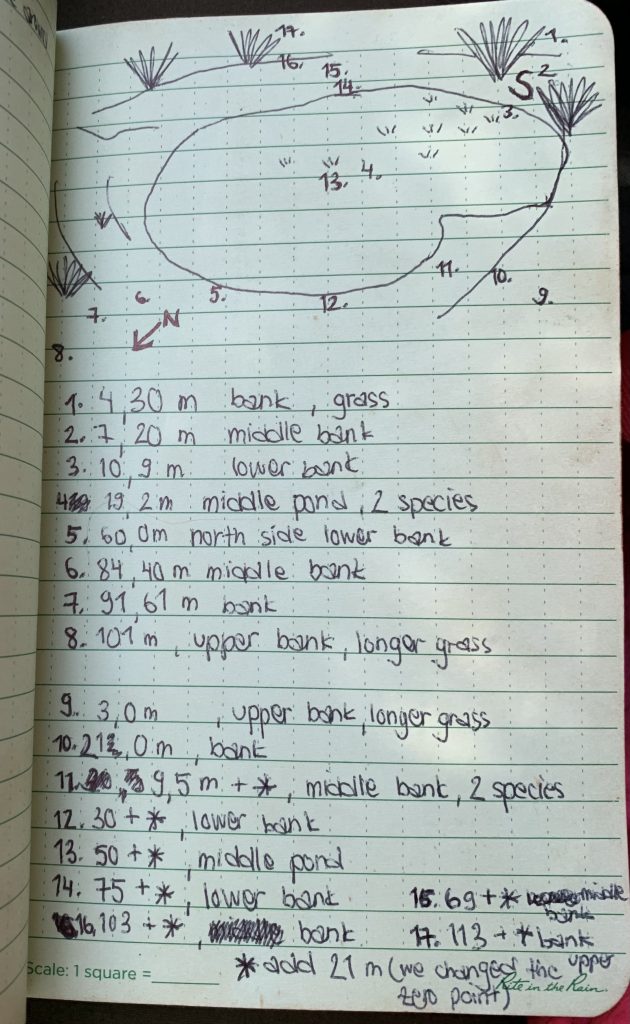
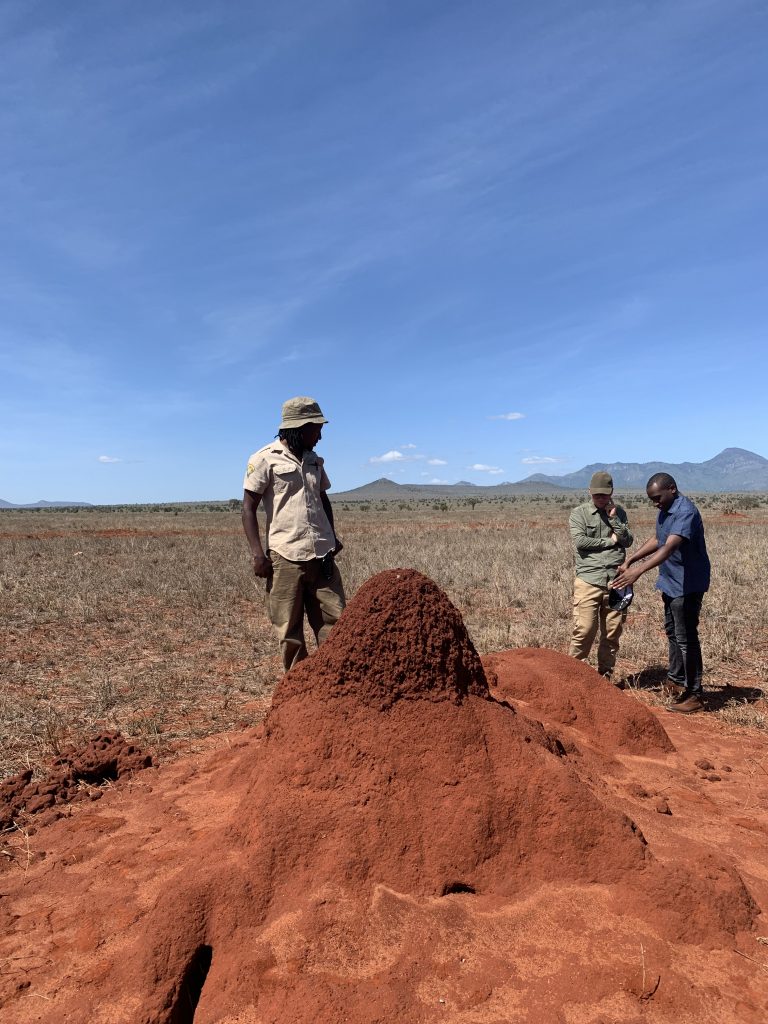
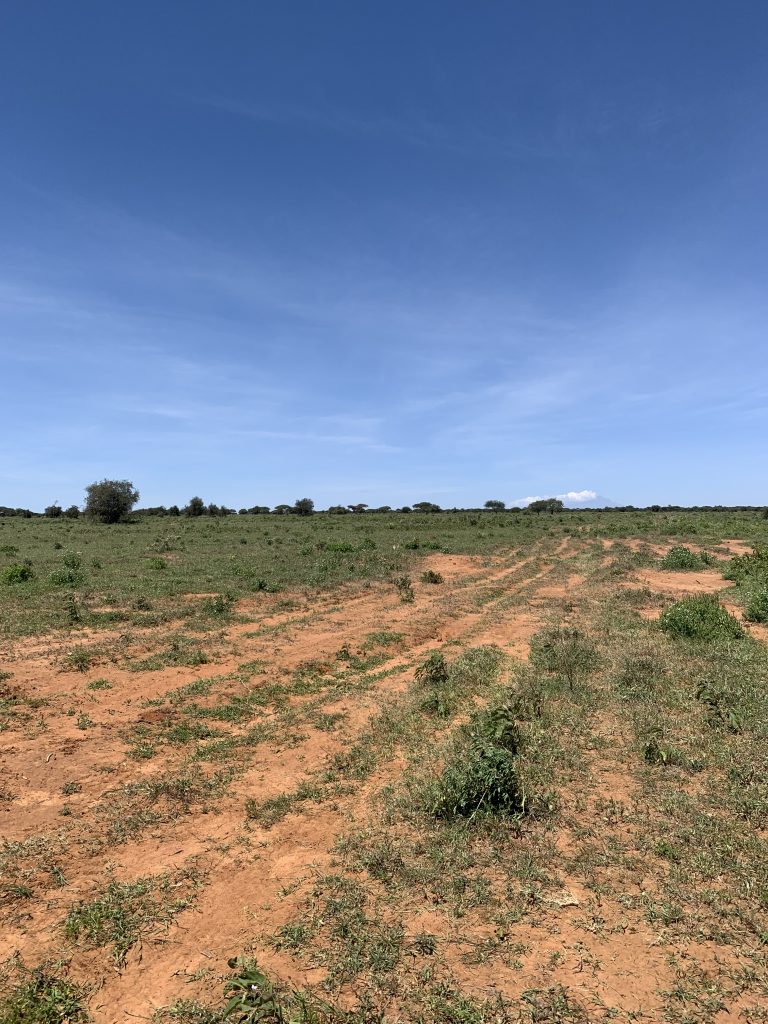

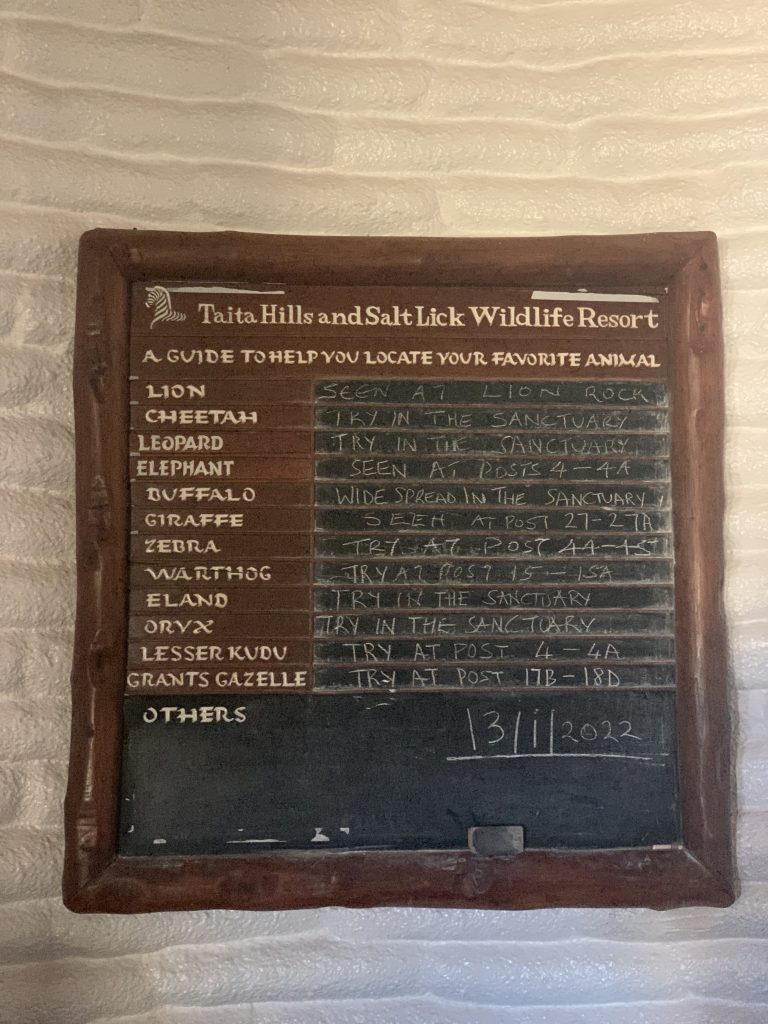
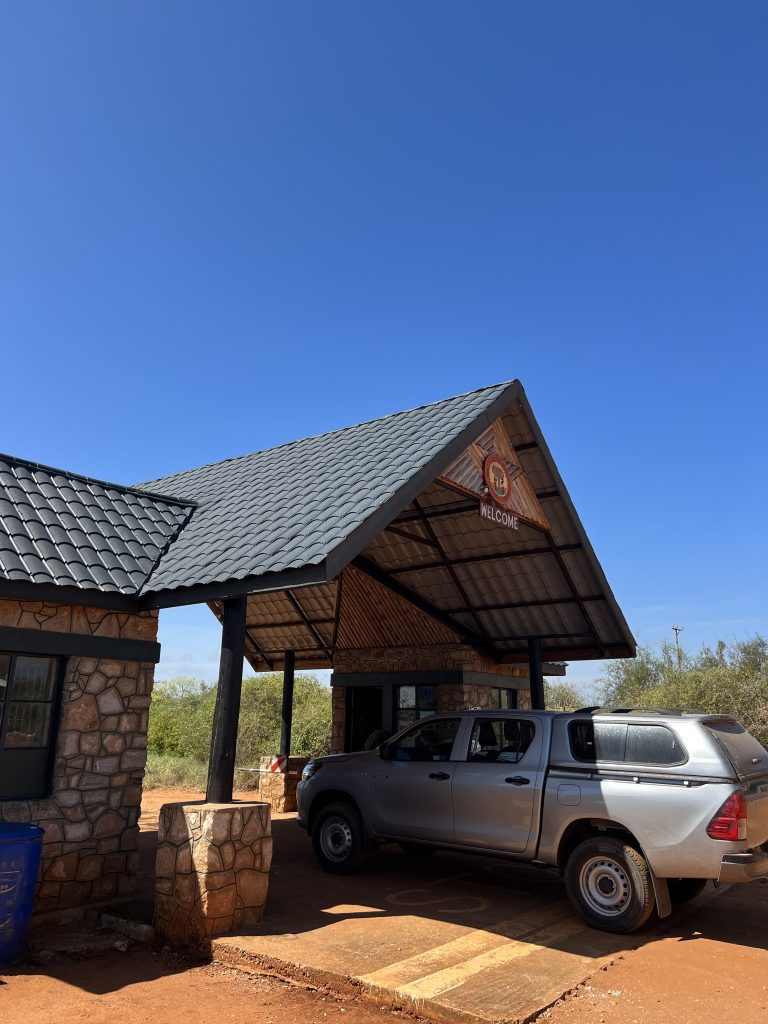

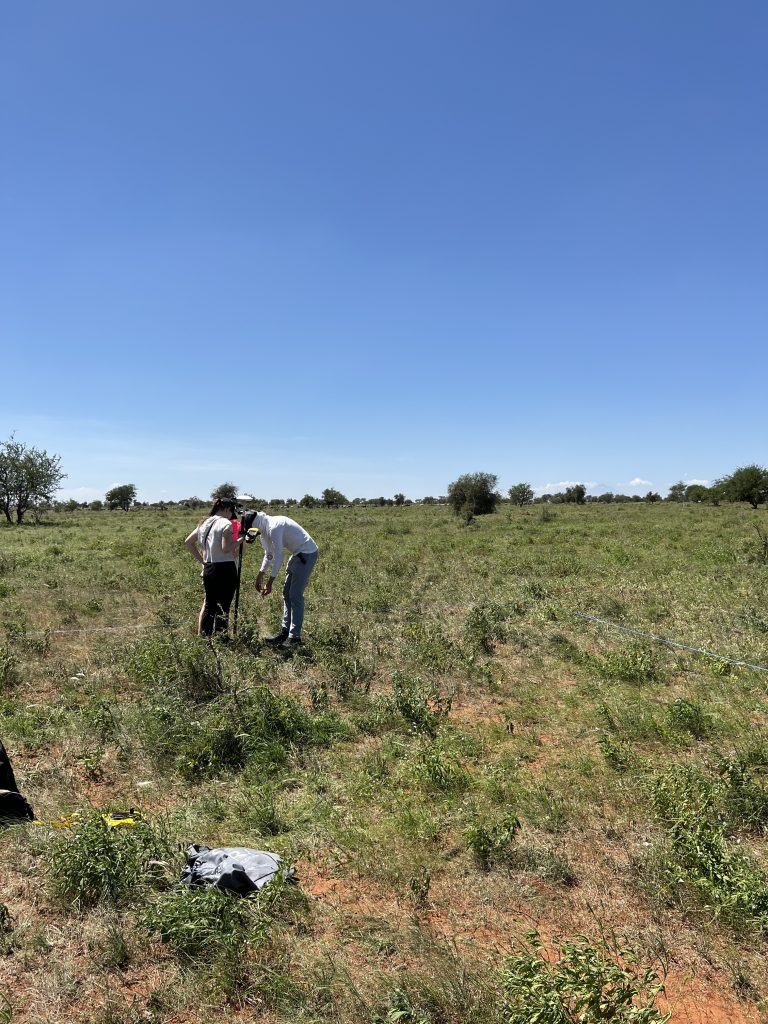
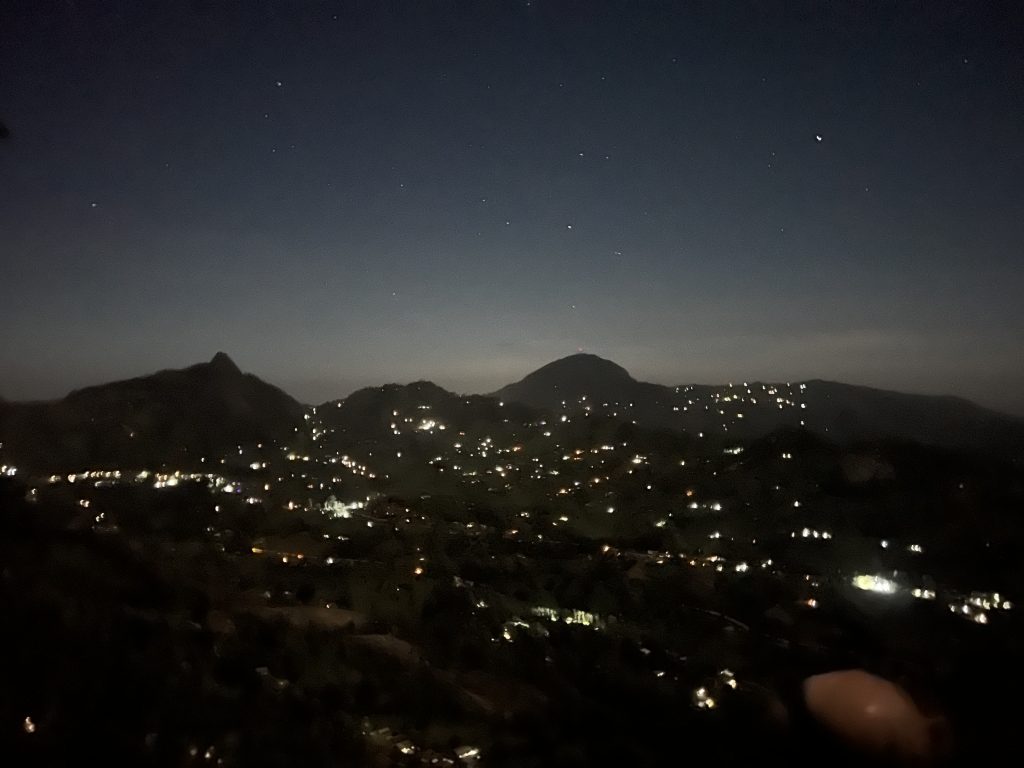
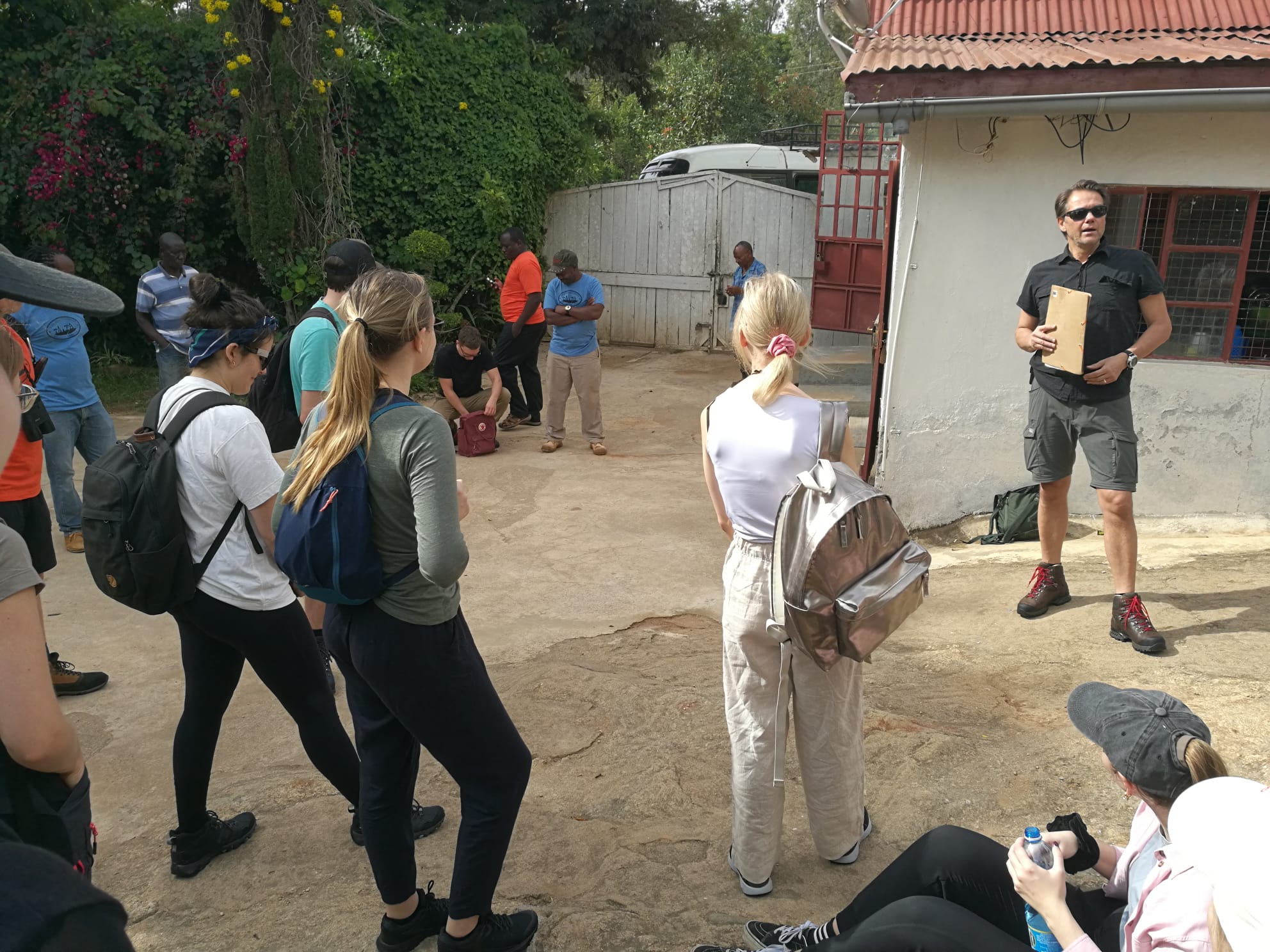

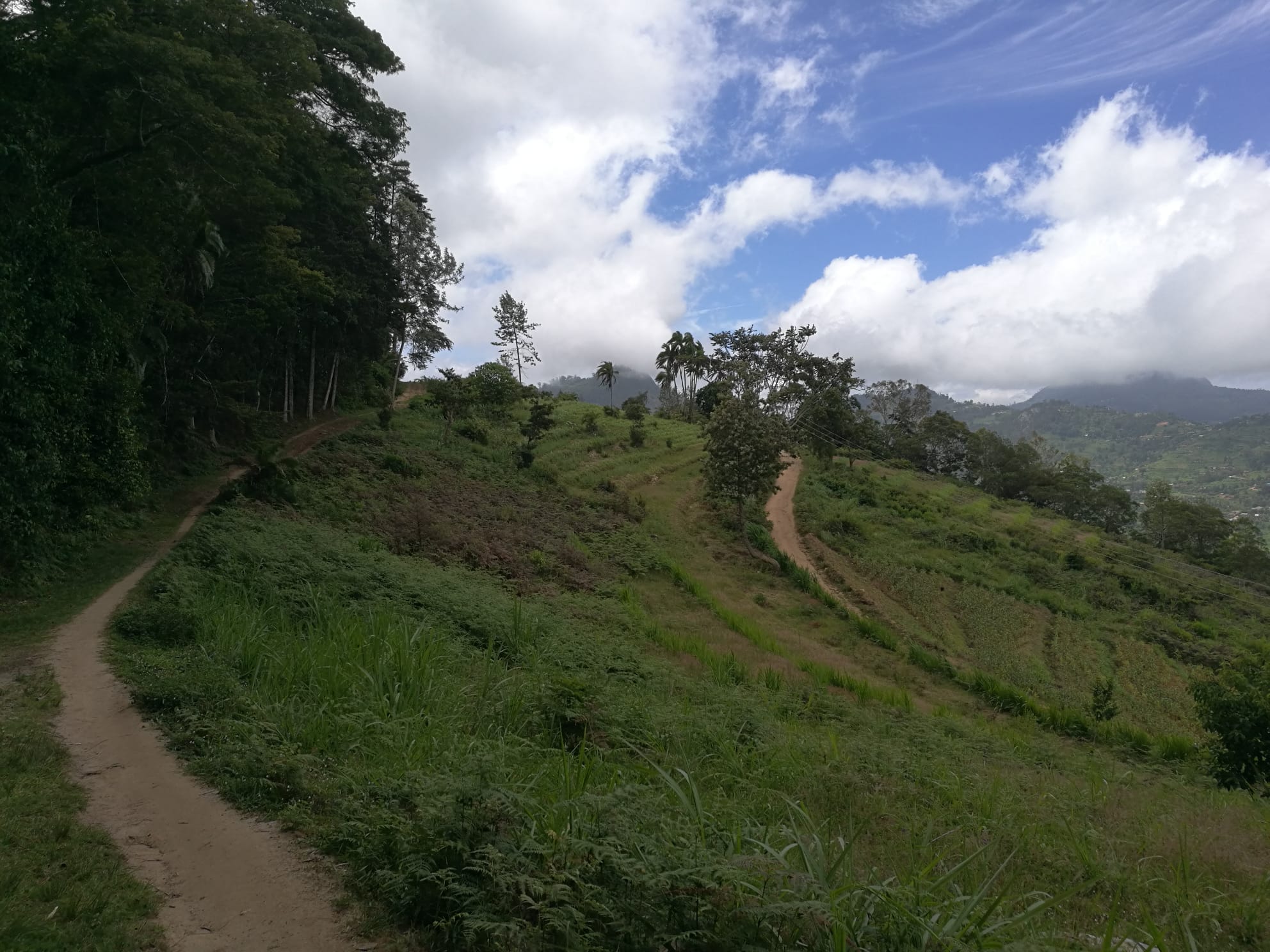
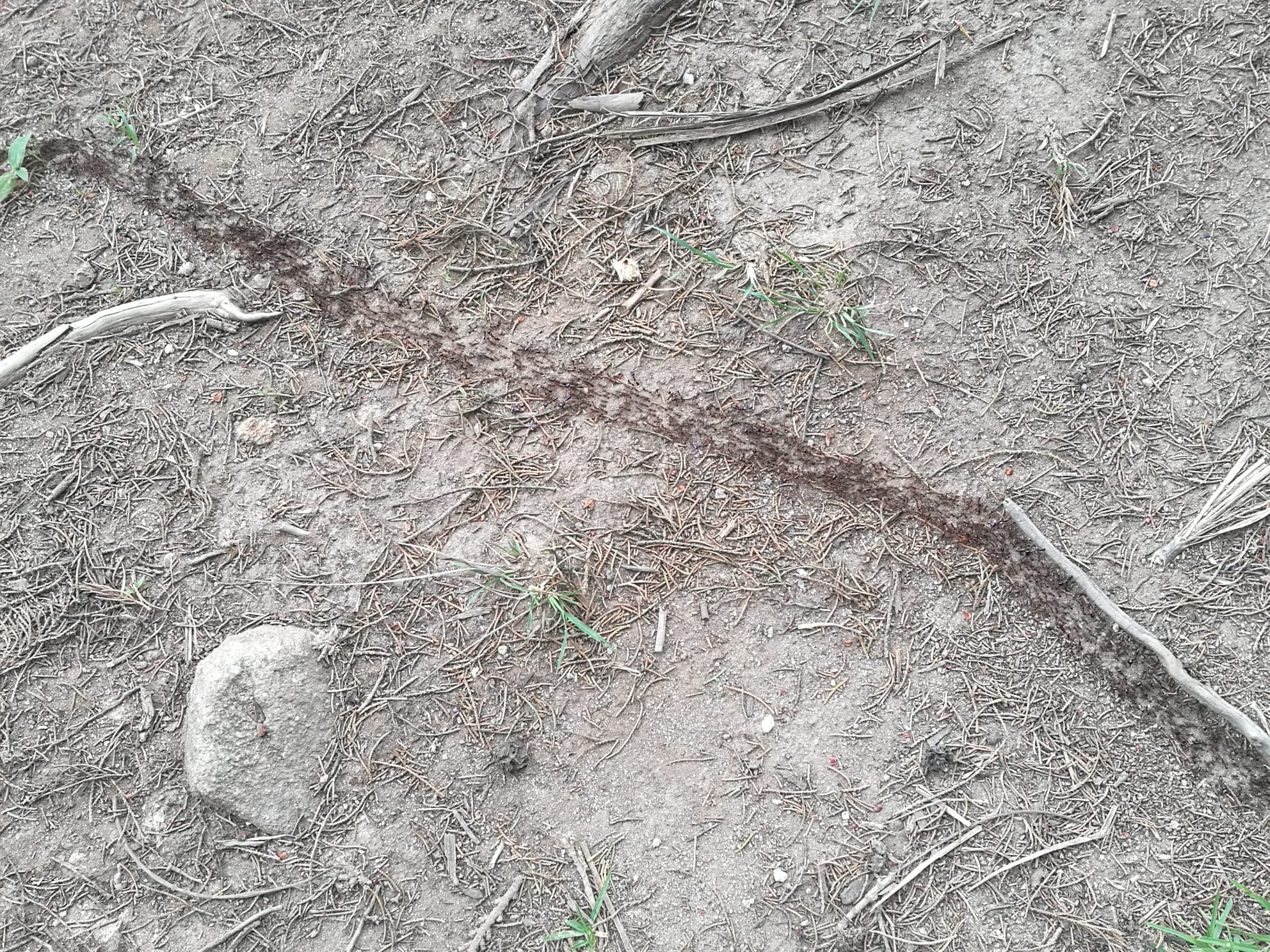

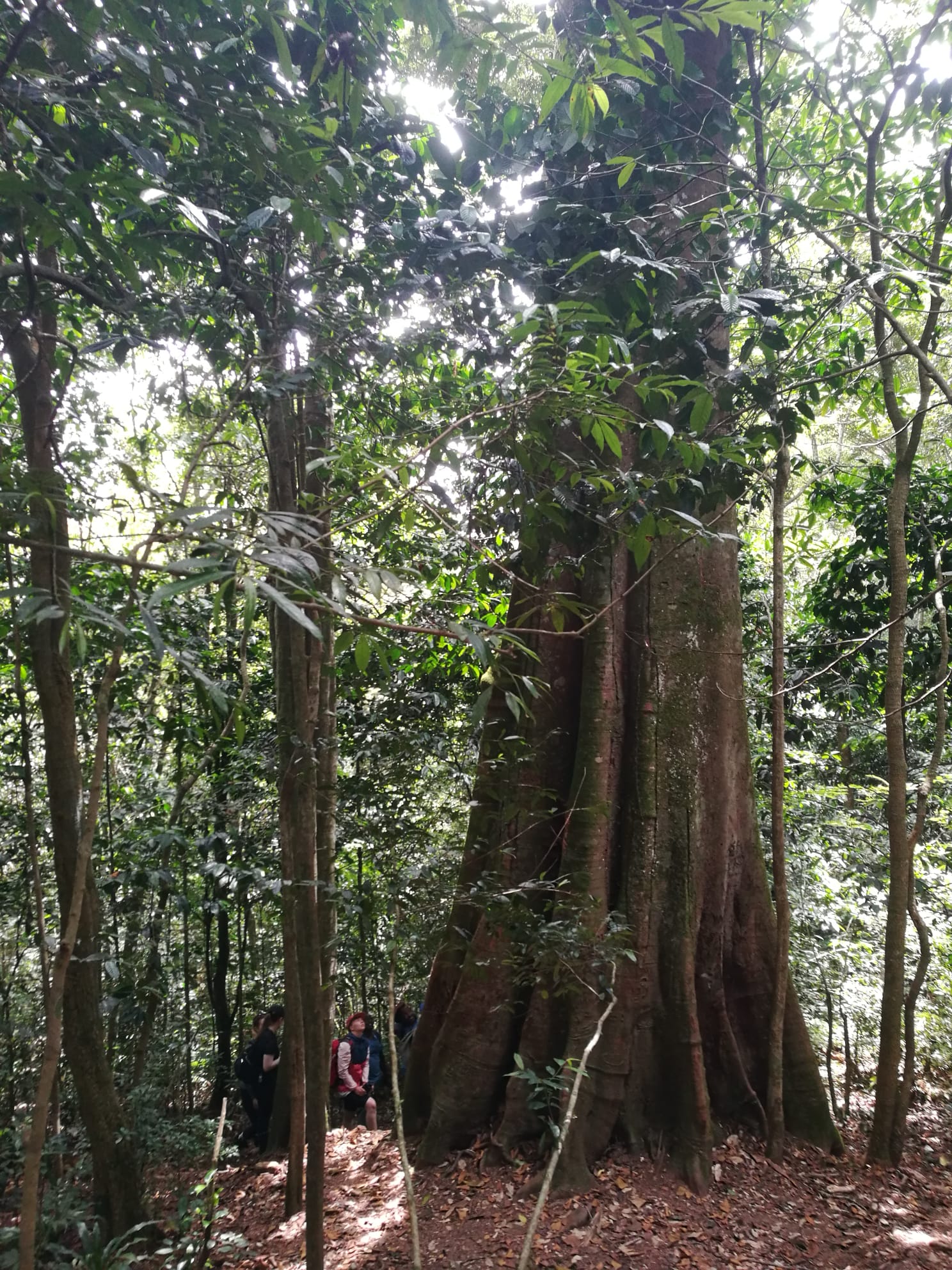





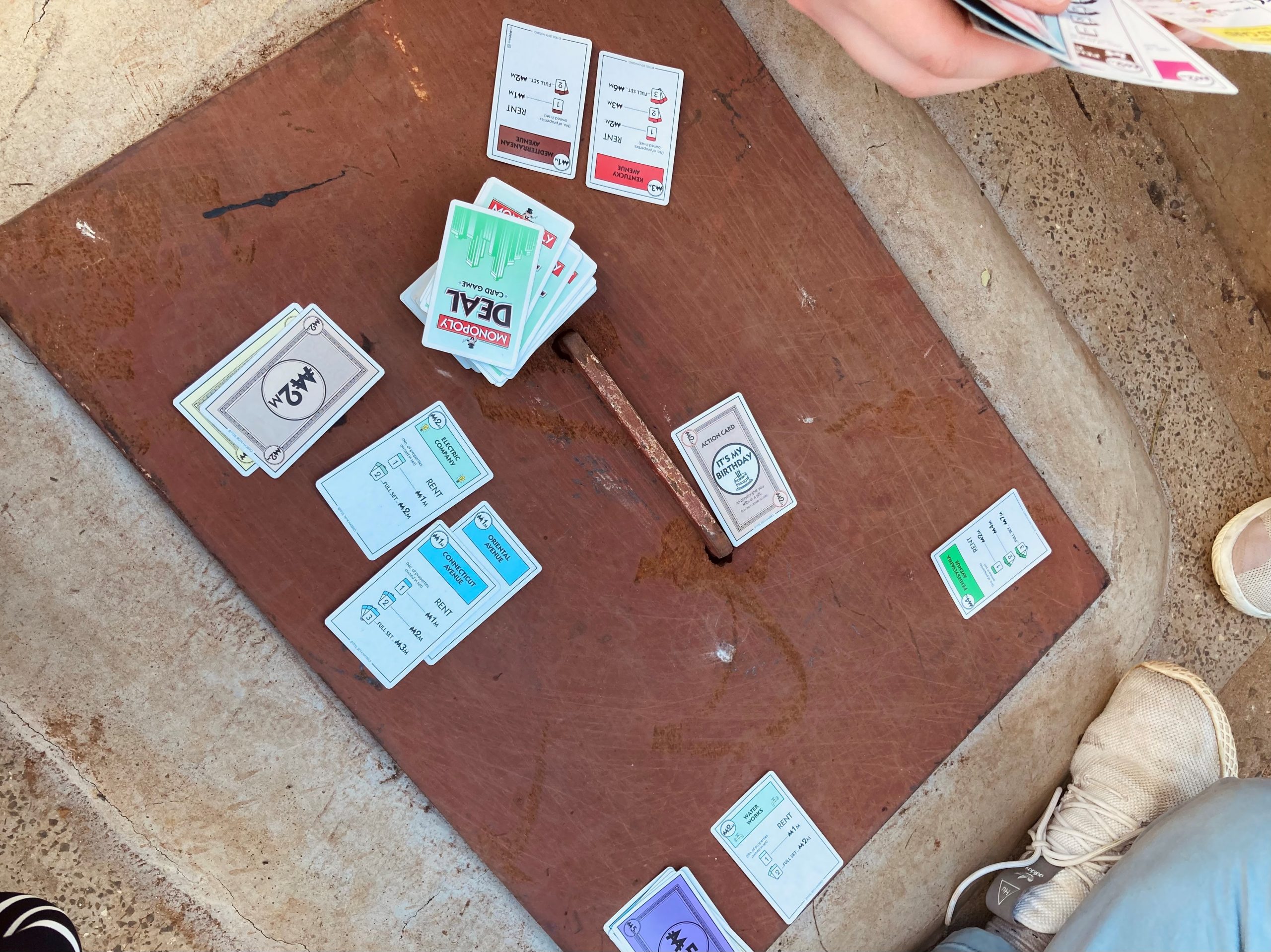

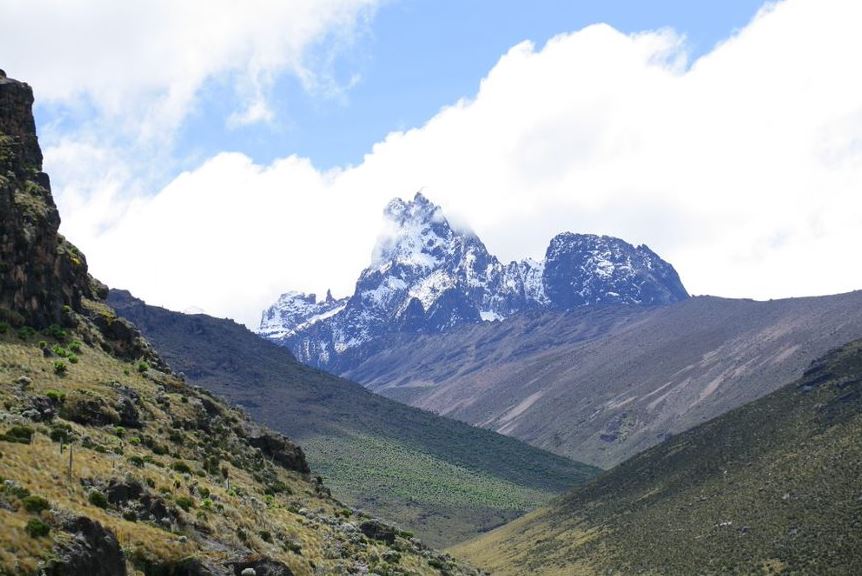
 As soon as we heard about the opportunity to travel to Kenya, we started to plan a way to fully benefit of the trip to the equator. We, me and Jussi, booked our flights to arrive to Jomo Kenyatta International Airport a week before the course start and headed to the highest mountain in Kenya and the second highest peak in all Africa – Mount Kenya.
As soon as we heard about the opportunity to travel to Kenya, we started to plan a way to fully benefit of the trip to the equator. We, me and Jussi, booked our flights to arrive to Jomo Kenyatta International Airport a week before the course start and headed to the highest mountain in Kenya and the second highest peak in all Africa – Mount Kenya. Next day we drove with our guide Patrick, cook Peter and ported David and Ken we to
Next day we drove with our guide Patrick, cook Peter and ported David and Ken we to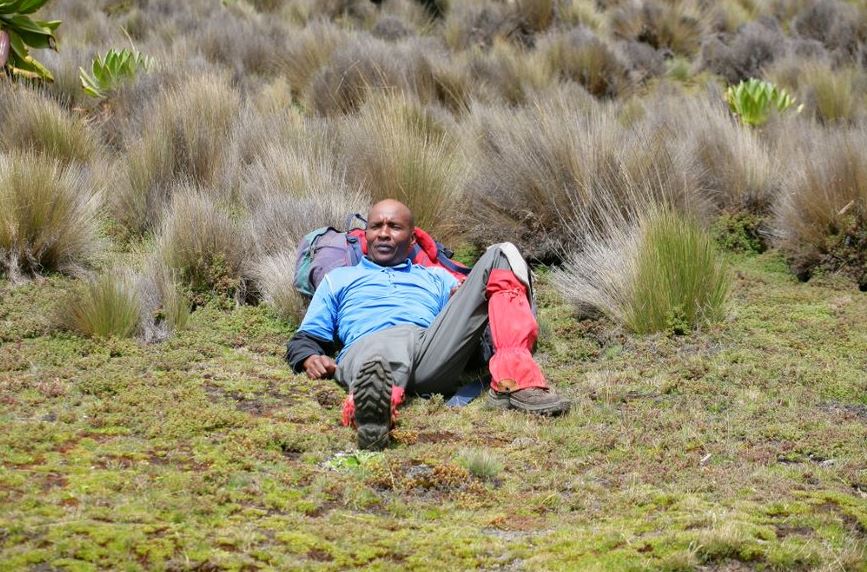 Patrick, our guide.
Patrick, our guide.